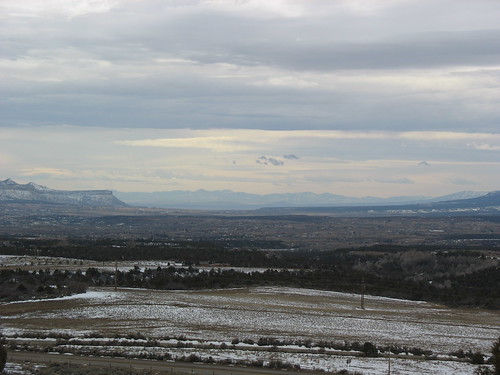Back in the 1970s, Congress asked the Bureau of Reclamation to study the feasibility of extending a water line across western New Mexico to carry water from the San Juan River to Gallup, New Mexico. Gallup’s a desert city, dependent on a limited aquifer. Gallup sits on the edge of the Navajo Reservation. The Navajos also don’t have a whole lot of water either – less, in fact, than Gallup. So in 1975, the Navajo Nation essentially said, “Hey, what about us?”
Today, in a Washington, D.C. news conference, Interior Secretary Ken Salazar announced that the Navajos (and Gallup) will finally get their water. Maybe.*
The project Salazar announced is classic Western water in a couple of ways. First, it’s big, muscular, expensive engineering. The pipeline to carry the San Juan’s water to Gallup and the waterless Navajo communities will stretch more than 200 miles. But it’s also one more case where, despite being legally first in line for “paper water” under the doctrine of prior appropriation and its interpretation by the U.S. Supreme Court, the Native Americans are last in line for federally subsidized “wet water”.
Albuquerque, for example, is now drinking its share of Colorado River, via the San Juan-Chama interbasin project, “the bulk of which was subsidized by the federal government,” as Charles Wilkinson notes in Crossing the Next Meridian. Similarly, non-Indian farmers and cities all across the West have been the beneficiaries of federal largess in the development of the water systems that underpin our hydraulic society.
It seems not unreasonable for the Navajos to get a piece of the action.
* The “maybe” is my way of characterizing the question of funding uncertainty. The Energy and Water Appropriations Bill that passed out of conference committee yesterday allocated $3 million for the first steps. The project has a complex funding mechanism to try to insulate it from the whims of Congress in the long term, but in the near term at least, it will need annual appropriations.
More:
Picture of the Chuska Mountains, licensed under Creative Commons, courtesy Teofilo


The less water there is, the more likely places like Gallup (let alone the Navajo Nation) will find themselves in costly competitions for it with places like Los Angeles, Las Vegas and Phoenix.
What is more “natural”? – building a pipe in defiance of a watershed to supply water to a nearby community, or sending that water flowing on a downstream course to pumps, canals and cities a thousand miles away?
Pingback: Tweets that mention jfleck at inkstain » Navajo-Gallup Water Project Moves Several Inches Forward -- Topsy.com